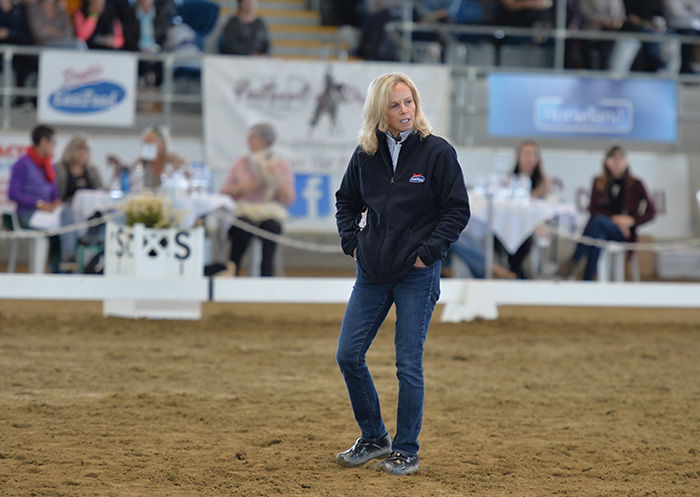One of the many wonderful things about Debbie McDonald as a trainer is that she is inside the rider, Debbie has been there done that, it’s not just great theory, it is hours and hours spent in the saddle acquiring the precious knowledge that she is now passing on to her students – like Kristen McAuslan and her horse Sirano…
Working with the spooky horse…
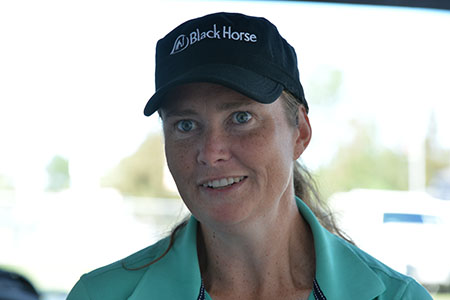
Kristen found that the American coach was “quite fussy about riding corners. Her message for me, was really riding through the corners, really collecting in the corners, getting the horse to sit, flex to the inside, get them really through and round, to set up for the movements coming out of the corner – and there are quite a few movements that come out of corners, so it is important.”
“My horse is quite spooky and he was quite spooky during our lesson the Thursday, particularly in one corner. So for the spooky horse – my horse – the lesson was about getting ultimate respect for the inside leg, to make sure he didn’t cut the corner where he was scared. Keeping him off my inside leg, to keep him on the line and keep his attention to the inside.”
Your horse?
“Siriano. I’ve had him since he was a two-year-old and I’ve brought him right through myself with the help of Nicole Tough. Siriano is by Sir Donnerhall, out of an Australian Warmblood mare. He’s training Prix St Georges / Inter 1, at the moment. We only started competing Prix St Georges last year.”
What are the main things you want to work on in the session with Debbie?
“Because he’s spooky, keeping his attention in a big atmosphere and also he can be a bit slow and lazy. We were working on quickening him up, making sure I got a good reaction from every aid that I applied, and not a slow reaction. Quicker, and keeping his attention.”
story continues below the advertisement
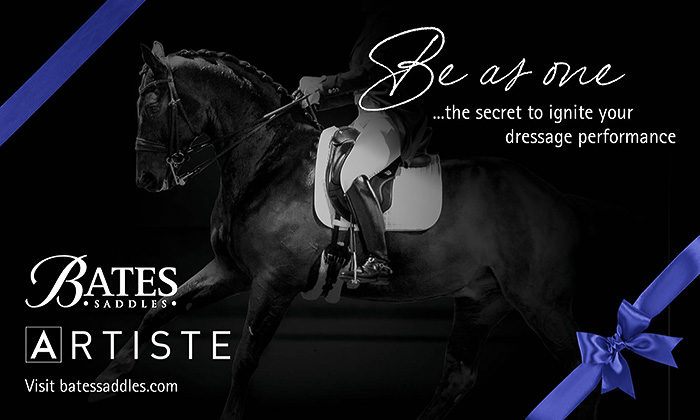
Working on Flying Changes…
As always, Debbie had the horse’s interest at heart: “We are going to work on changes today but in fairness to the horse, he needs to warm up first.”
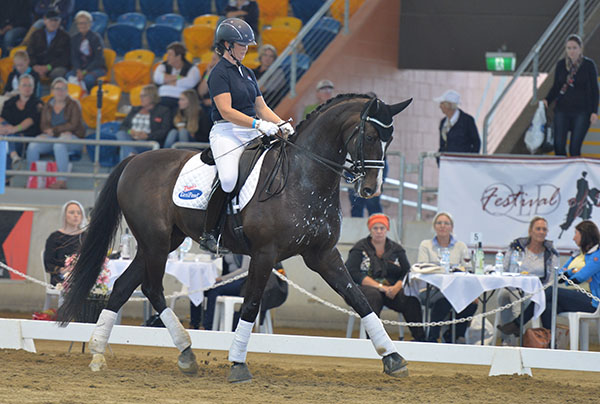
Oh oh spook…
“When you feel him coming up, put him into shoulder in, keep him busy, let him go a little sideways when he wants to look.”
Time to get down to business:
“One of my pet peeves is horses that can’t do a prompt, clear walk / canter transition. If they are sharp on the aids for the transition, I am pretty confident of producing flying changes.”
story continues below the advertisement
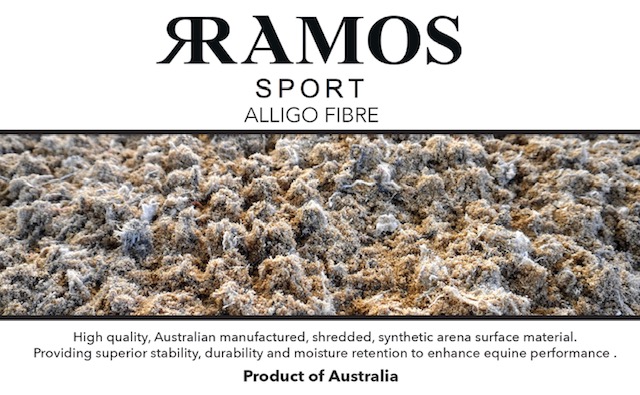
But first a little more lateral work:
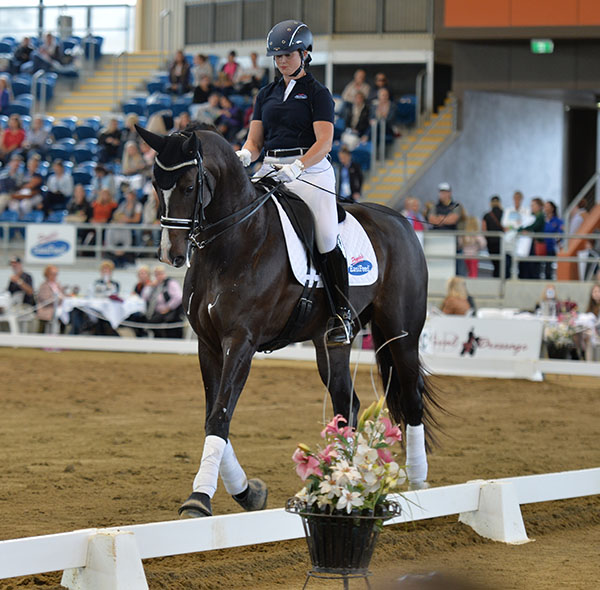
“Forward – think add and not subtract, he is already behind your leg. Don’t nag – go rising and then let your leg hang quiet. Ask for haunches in, and shoulder in, he comes off the rail because basically he doesn’t understand your inside leg.”
Here it comes again, this should be engraved in the mind of every rider who aspires to correctness: “The quality of the gait is far more important than the movement.”
“Canter a little and see if we can’t make him a little sharper. Try to cover a bit more ground, more forward on the short side.”
And the eye was on the rider’s position:
“Clear aids are so important, and you have a tendency to ride with your leg back, and that confuses the horse when we work on the flying changes. By nature he’s not a hot horse, he requires quite a bit of leg. Now a walk / canter transition, right on the aid, that’s our preparation.”
Debbie came back to her theme about how a horse can teach a rider to get into bad habits:
“A laid back horse will teach the rider to throw his body around to do the changes. He wants you to work a little harder than him. You can change that, but you have to be committed. When he backs off, bump him with the leg – say ‘go to the rein’. Sometimes he canters and backs off before you ask for the change, and you are getting a little over your seat, not sitting and making the change in front of you.”
Debbie is not going to pretend that negative reinforcement doesn’t have a rôle in training the dressage horse: “Make it clear – you’ve got to fight harder than this. Offend him please, give him a big wallop (with your leg), he’s got to take you more seriously. Now really gallop down the long side.”
“When you get into a muddle, don’t stop focusing on what is important – reacting to the leg. Bring him back, then ride forward to the change, don’t just abort the mission. You’ve got to think quicker – Sweetie, I have faith in you.”
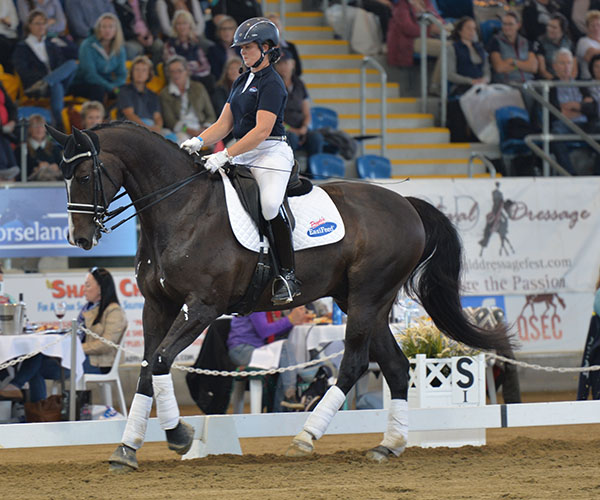
“Dressage is not an easy sport, there are so many variations, but the reaction to your leg, and straightness, are so important. You just don’t see top Grand Prix riders kicking or straining for a result. Don’t tease him, tap there so quick he doesn’t know it is coming. Everything in a horse’s life should be black and white, not grey.”
story continues below the advertisement
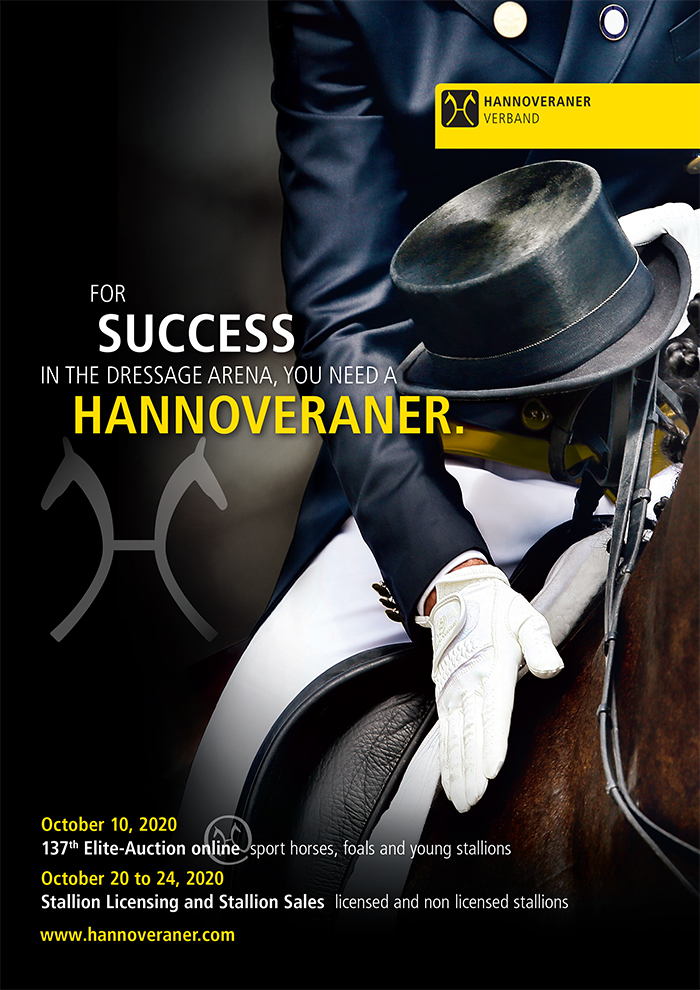
Time to get serious: “Touch and GO! Sit up, sit pretty. Let him carry you – you’re letting him think too much. Give him a push, sit and push, try not to step out of the stirrup. You come off the saddle in the changes, if you came to me, you’d be working without stirrups.”
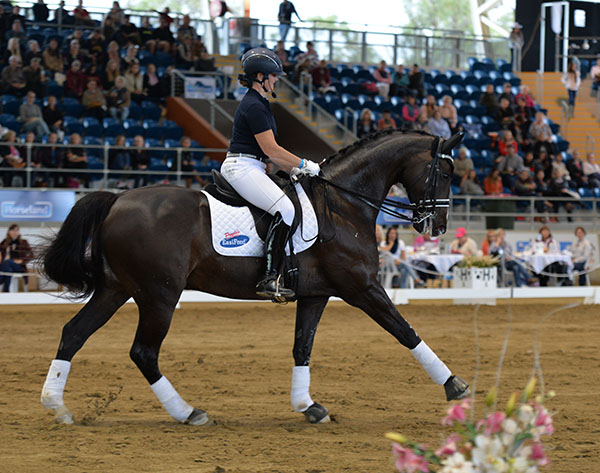
“It has to be forward thinking. The horse wants to get to the end of the arena, no matter what movement you are riding.”
“Flying changes for some horses come naturally, for some it is a struggle. Horses teach us to compensate for them, keep it clear, keep it straight and forward.”
Thank you Debbie…



